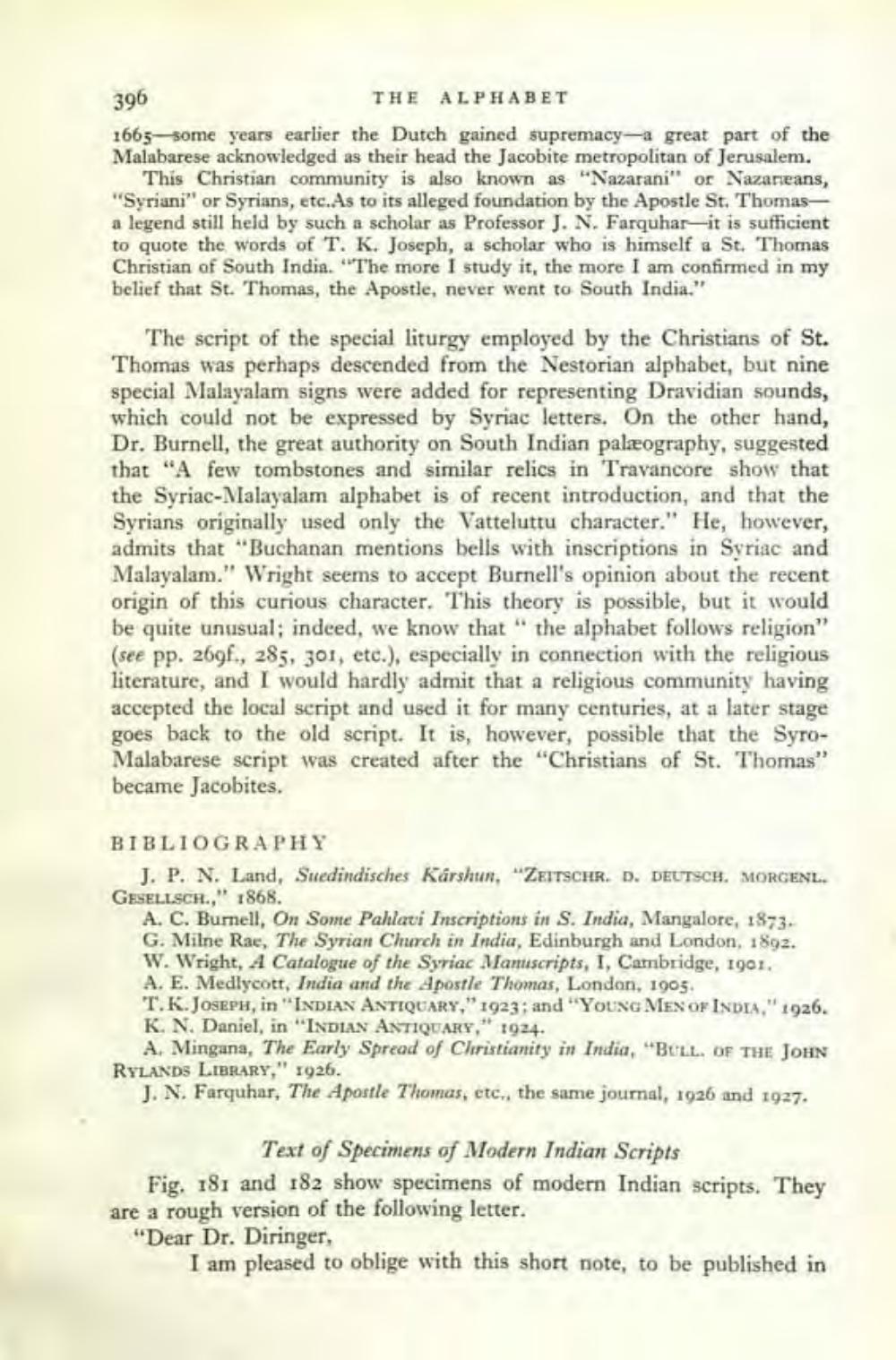________________
396
THE ALPHABET
1665 - some years earlier the Dutch gained supremacy-a great part of the Malabarese acknowledged as their head the Jacobite metropolitan of Jerusalem.
This Christian community is also known as "Nazarani" or Nazarteans, "Syriani" or Syrians, etc. As to its alleged foundation by the Apostle St. Thomasa legend still held by such a scholar as Professor J. N. Farquharit is sufficient to quote the words of T. K. Joseph, a scholar who is himself a St. Thomas Christian of South India. The more I study it, the more I am confirmed in my belief that St. Thomas, the Apostle, never went to South India."
The script of the special liturgy employed by the Christians of St. Thomas was perhaps descended from the Nestorian alphabet, but nine special Malayalam signs were added for representing Dravidian sounds, which could not be expressed by Syriac letters. On the other hand, Dr. Burnell, the great authority on South Indian palæography, suggested that "A few tombstones and similar relics in Travancore show that the Syriac-Malayalam alphabet is of recent introduction, and that the Syrians originally used only the Vatteluttu character." He, however, admits that "Buchanan mentions bells with inscriptions in Syriac and Malayalam." Wright seems to accept Burnell's opinion about the recent origin of this curious character. This theory is possible, but it would be quite unusual; indeed, we know that "the alphabet follows religion" (see pp. 26gf., 285, 301, etc.), especially in connection with the religious literature, and I would hardly admit that a religious community having accepted the local script and used it for many centuries, at a later stage goes back to the old script. It is, however, possible that the SyroMalabarese script was created after the "Christians of St. Thomas" became Jacobites.
BIBLIOGRAPHY
J. P. N. Land, Suedindisches Kárshun, ZEITSCHR. D. DEUTSCH. MORGENL. GESELLSCH., 1868.
A. C. Burnell, On Some Pahlavi Inscriptions in S. India, Mangalore, 1873. G. Milne Rae, The Syrian Church in India, Edinburgh and London, 1892. W. Wright, A Catalogue of the Syriac Manuscripts, I, Cambridge, Igo). A. E. Medlycott, India and the Apostle Thomas, London, 1905. T.K. JOSEPH, in "INDIAN ANTIQUARY," 1923; and "YOUNG MEN OF INDIA,"1926. K. N. Daniel, in "INDIAN ANTIQUARY," 1924.
A. Mingana, The Early Spread of Christianity in India, "BULL OF THE JOHN RYLANDS LIBRARY," 1926.
J. N. Farquhar, The Apostle Thomas, etc., the same journal, 1926 and 1927.
Text of Specimens of Modern Indian Scripts Fig. 181 and 182 show specimens of modern Indian scripts. They are a rough version of the following letter. "Dear Dr. Diringer,
I am pleased to oblige with this short note, to be published in




